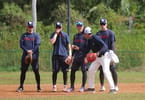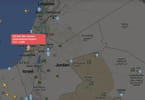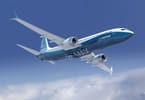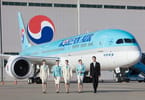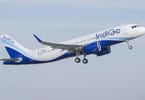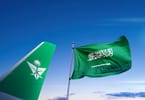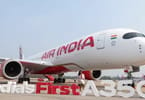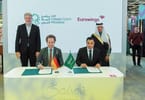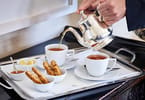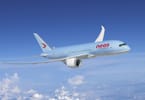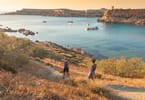Going on ‘safari’ in Africa often means getting prepared for the roughest of roads, back maiming potholes and endless hours of driving through dust clouds raised by preceding vehicles.
Not so when opting for a visit to the Murchisons Falls National Park. Once getting out of the capital, part of the exit road still under reconstruction by the time of writing, a highway of sorts awaits the traveller, as one drives through the evergreen hills and farms lined up along the road.
Recently repaved in its totality it allows for slightly higher average speed, but be prepared for the occasional herd of cattle crossing, cyclists doing unexpected U-turns or broken down trucks obstructing half and more of the extra wide road, and expect ‘bumps’ at the most unexpected of places, which, if they catch the driver unaware, can well catapult a car off the road.
The same road incidentally passes the Ziwa Rhino Sanctuary about 170 KM from Kampala, with the turn off clearly marked at Nakituma trading post and the entrance gate only a few kilometres off the main road.
Not long afterwards one reaches a major T – junction at ‘Kafu’, where one takes a left turn towards Masindi, and hey presto, this road too is now all tarmac, although not as wide as the main Kampala – Gulu highway.
Nevertheless, the good road has attracted a lot more traffic from visitors and the petrol stations, hotels, inns and restaurants in Masindi do brisk business, when the cars and passengers make the overdue ‘pit stop’.
We in this case drove on, some 90 or so more kilometres towards our destination in the national park, and after turning into the ‘park road’ the murram was in fact much improved, unlike the few kilometres of ‘county road’ outside Masindi, which could do with some grading once in the while, considering the money travellers bring into the council’s coffers through taxes and fees levied on local business.
Entry to the park was efficient, courteous and swift and a large sign informed us that we were entering the Bugungu Game Reserve, the Budongo Forest Reserve and of course Murchisons Falls NP.
Enroute to the river crossing point at Paraa we saw plenty of monkeys, lots of birds, a great swarm of tsetse flies buzzing around the vehicle at one or two places inside the forest but no other game, probably due to the thick vegetation on both sides of the track. The drive was without problems, no flat tires and only a little scraping on the bottom of the car once in a while, where gravel had accumulated in some places.
The UWA operated ferry crossing the River Nile runs at regular intervals and is quite affordable, unless one uses the ferry service ‘on demand’ for an unscheduled trip, which costs quite a bit extra. Yet, with the Paraa Safari Lodge visible on the other side of the river, and a keen sense of peckishness developing, one may wish to spend the extra bucks to get across the river and to the lunch buffet to enjoy the ‘fruits of labour’ – i.e. the long drive all morning – on the first floor terrace of the lodge overlooking the river.
Hippos are visible from the lodge along the river shores, birds are twittering away in the trees just an arm’s length from the terrace chairs and a grey bushy tailed squirrel acquainted itself with us before racing up the wall of the lodge towards the roof.
Paraa’s rooms were fully refurbished towards the end of last year (2008) and work on the public areas, the buildings’ outer appearance, the roof and the gardens will commence soon, bringing this lodge at level par with the sister operation ‘Mweya Safari Lodge’ in Queen Elizabeth National Park. The bathrooms are spacious enough and the showers ‘deliver’ without flooding the bathroom floor, a refreshing difference from a recent experience elsewhere in the country about which I rather not write so as to avoid embarrassment for them and their owners. The wardrobe doors in the room resemble the classic big trunks used when still travelling by ocean cruisers on the upper decks, and like the mirror above the dressing table they are lined with brass fittings and leather. Curtains, cushions and bedcovers of course are all in matching colours while the safari canvas chairs on the terrace, or balcony on the upper floor, complete the comfort zone.
(A view from the room, overlooking pool, forest and the mighty river Nile)
Taking a brief exploratory walk after lunch suddenly found me wanting more, and there is no telling how time flies as I wandered around the lodge compound looking for birds, with a guidebook in one hand and the binoculars in the other. The lodge provides guests with a 50 page high quality booklet, showing all the commonly found birds named in it and visitors can tick the species and record their achievements of an afternoon’s bird watching. In fact some 12 pages are devoted to birds along, indicating the treasure birders can find in the area, while a further 8 pages are devoted to mammals, bats, rodents and reptiles. The remaining 30 pages are attending to the general history of the park and the lodge, directions, distances and maps as well as things to do and see while there. What a commendable effort by the owners / managers to generously give away such a handy guide.
Afternoon tea is served in the lounge on the ground floor of the lodge and I barely managed to be back in time to have a cup before heading for the room and getting ready for supper. Hot water by the way is prepared using solar technology which is not just saving the lodge money for heating expenses but is an environmentally sound practice and an investment paying itself off within a short time.
The food for dinner, as was the case with lunch, was well prepared, offered plenty of tasty choices and we were looked after by courteous waiters knowing their trade. The three course meal was followed by tea / coffee and a visit to the bar for a quality digestive, before retiring to the night sounds of nature, which unfolded outside the balcony. With a ceiling mounted tight mosquito nets surrounding the bed, one can easily leave the terrace door open for some air, but for those with affinity to gadgets, there is a split unit air conditioner in the room, which I personally left untouched for the entire stay, although other guests apparently used it all the time, after all the weather at Murchisons is rather hot and humid.
A typical second day in the park includes the ‘mandatory’ visit to the falls by boat, a unique experience to see birds and wildlife from the river. Paraa now hold their own concession for river tours and operate three boats (of 7 and 2×14 seats respectively), presently leaving from the main ferry jetty. It was however learned during the visit that the owners are planning to build their own landing point just below the lodge and create a walkway towards the river, which will also allow guests further areas of safely exploring the lodge grounds. During the river trip we saw the ever present giant Nile crocodiles which left quite an impression on us all and we agreed it was not a good place to fall overboard or going for a swim. We also observed a lot of other game coming to the river to quench their thirst, targets for our cameras and also for the crocs lying in wait. Birds are easily watched as they fly about in the reed grass along the river shores and quality binoculars and cameras with good lenses help to follow their flight and capture them on film or disk. The Nile falls are the key attraction in this park and the nearly 50 metre drop of the river makes for spectacular pictures. Nowhere else along the river’s route from Jinja towards the Mediterranean Sea can one find a drop so steep, making the visit quite unique. The boat of course runs with engines on full throttle to withstand the current, leaving awestruck first time visitors just a few minutes to get their pictures, take in the sounds of the crashing water and get more than a little wet from the spray upon which rainbows dance from here to there. Returning to the jetty allows for a gentle float experience, unlike the ‘hard labour’ the engines and the boat man had to put in on the way up to the falls.
The afternoon game drive on the Northern side of the river, where the Paraa Lodge is located, took us towards Lake Albert, where the ‘Victoria Nile’ transforms itself into the ‘Albert Nile’ in its brief journey through the lake. The drive was rewarding in many ways, as we easily found a pride of lions, giraffes, buffalos and elephants, besides plenty of antilopes and gazelles and some ‘Patas’ monkeys chasing around. Birds are ever present and due to the vicinity of the river and the lake many species can be seen here which are not found in other parts of the country. Alternatively to the game drive one can do another boat trip towards the river delta, which is a ‘gold mine’ for birders and game watchers. I had in the past repeatedly observed elephant swimming across the river, or from one little island to the next and the venerable and rare shoebill storks have been in attendance every time I visited their perches. The tracks in the entire park are well maintained, a credit to UWA’s management team and their staff in charge of keeping the roads and tracks in good shape.
While in Paraa I also overheard tourists and their guides talk about a section of the park which has apparently been ‘sealed off’ to allow for test drilling, as parts of Murchisons Falls NP is also part of an oil exploration ‘block’ along the Lake Albert shores. This particular issue will be followed up with a separate article, looking into the pro’s and con’s of such activities.
On the day of departure normally comes an early start, to catch the first ferry across the river and then to drive on the Southern side of the river to the top of the falls. A spectacular view awaits visitors of course as the waters of the Nile rush towards the abyss and then squeezes through the narrowest of gaps to gush some 50 meters down, and the view point allows glimpses right down the cascading waters. And below, boatloads of new visitors are already enjoying the spectacle from a different perspective, as we did the previous day.
As the saying goes, time flies and wanting to be back in Kampala before nightfall we then said our combined ‘kwaheris – or good bye’s in Kiswahili’ to the park and started our journey back to the noises and crowds of the capital city, with equal sentiments by all in the car when hitting the traffic jams on the outskirts of Kampala: ‘wish we had stayed another night’.
Visiting during mid week is a better bet for space as weekends often see the lodge full to the brim with ‘Kampaleans’ wanting to get away – I can’t blame them …
WHAT TO TAKE AWAY FROM THIS ARTICLE:
- We in this case drove on, some 90 or so more kilometres towards our destination in the national park, and after turning into the ‘park road' the murram was in fact much improved, unlike the few kilometres of ‘county road' outside Masindi, which could do with some grading once in the while, considering the money travellers bring into the council's coffers through taxes and fees levied on local business.
- Yet, with the Paraa Safari Lodge visible on the other side of the river, and a keen sense of peckishness developing, one may wish to spend the extra bucks to get across the river and to the lunch buffet to enjoy the ‘fruits of labour' – i.
- Recently repaved in its totality it allows for slightly higher average speed, but be prepared for the occasional herd of cattle crossing, cyclists doing unexpected U-turns or broken down trucks obstructing half and more of the extra wide road, and expect ‘bumps' at the most unexpected of places, which, if they catch the driver unaware, can well catapult a car off the road.



